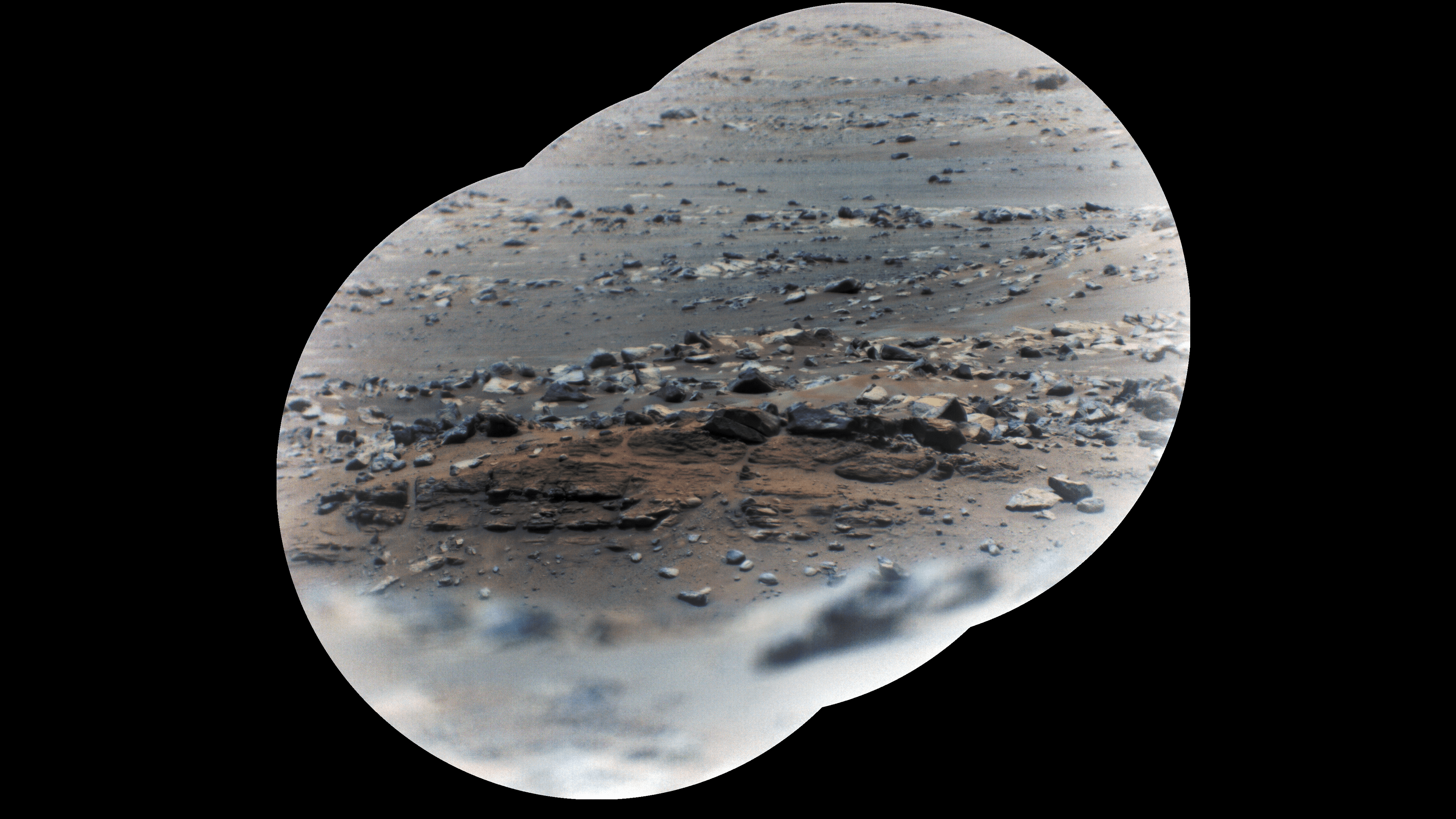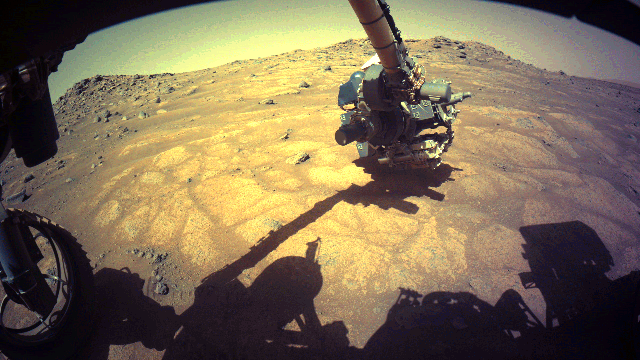The Perseverance rover is gearing up to drill some Martian rocks, and mission scientists have seen evidence for ancient flash flooding in the dried-up lakebed where the rover landed. NASA shared these updates and more during a press conference today at the Jet Propulsion Laboratory in Pasadena, California.
Perseverance landed on Mars in February, and its science mission officially began in June, following operational checks on its instruments and the historic flights taken by the Ingenuity helicopter. Perseverance is tasked with exploring Mars’ Jezero Crater, the site of a former lake that NASA scientists hope could contain fossilized evidence of Martian life.
So far, Perseverance has driven about a kilometre, imaging interesting rock formations along the way. These formations shed light on the Red Planet’s geologic history, and some of them are promising sites to investigate for biosignatures (evidence of life), which researchers expect could look like the stromatolites encased in ancient rock on Earth. Ultimately, the rock samples collected by the rover will be grabbed by another mission and brought to Earth — the first materials that will be retrieved from Mars.
Perseverance has been driving near the Martian Séítah, a hazardous stretch of sand dunes that the rover could easily get stuck on. Olivier Toupet, the rover’s enhanced navigation team lead, said that a major improvement in the rover’s artificial intelligence system has meant that the rover can think about where it will go next while it is driving, a big step beyond the stop-and-go navigation of previous rovers.
All the while, Perseverance has been conducting technological demonstrations that will inform future missions. Another demonstration besides Ingenuity was MOXIE, in which Perseverance generated a small amount of oxygen on the Martian surface, which has huge implications for human ambitions beyond Earth. “This experiment is feeding forward to these future missions where we’d want to extract oxygen, which we’d want to use for human astronauts to breathe and even launch vehicles,” said Jennifer Trosper, Perseverance’s project manager, during today’s press conference.
The rover’s final destination is called Three Forks, which demarcates a dried-up river delta that fans out from Jezero. On its way, it’ll visit several points of interest, including the Crater Floor Fractured Rough, the first sample site. NASA isn’t sure whether the fractured rough is igneous or sedimentary, the answer to which will inform scientists on how Jezero formed and what clues about life it could contain. Perseverance scientists expect the lake bed will hold some of the oldest rocks that the rover will have the chance to look at before it heads to the river delta.
“One of the hypotheses that we’re trying to test is that the lake that once filled Jezero wasn’t there just once, but that it went through multiple episodes of filling up, drying down, and filling up again,” said Ken Farley, a Perseverance project scientist at Caltech, during the press conference. “This is very important because it means we’ll have multiple time periods in which we could possibly learn about environmental conditions on Mars, and we have multiple time periods where we might be able to look for ancient life that might’ve existed on the planet.”
Farley said that images taken by Perseverance indicated that Jezero’s ancient lake had different water levels at different times, and that scientists saw evidence that ancient flash flooding moved large boulders across the delta. One of the greatest points of interest so far in the mission is a rock outcrop to the south of the rover’s landing site nicknamed Artuby, after a river in the south of France. Artuby appears to be fossilised Martian mud, exactly the sort of stagnant, unperturbed material from the ancient lake that NASA wants to investigate.

For sampling, the rover will first abrade the rock surface to clear it of any concealing elements, like Martian dust. Then the rover will extract a core of rock and seal it in a sampling tube within the rover’s belly. That tube will eventually be included in a sample cache that, if all goes well in the coming decade, will be brought to Earth by another spacecraft.
“A lot of what we’ve been doing recently both on Earth as well as on the vehicle is preparing for that first sample,” Trosper said. “We are ready to sample … we expect to get that first sample within the first few weeks of August.”
While Perseverance has not yet sampled any rock, it did process one of its five witness tubes. Witness tubes are very similar to the tubes meant for samples, but they contain with materials that detect contaminants. Witness tubes are opened and sealed to sample the local Martian environment before extracting any rock, so that when all the tubes are returned to Earth, NASA scientists will know whether any Earthly contaminations were present during sample collection. There are 38 other tubes meant to take on samples — that’s 38 opportunities for us Earthlings to see what Mars is made of, how the planet has changed, and what, if anything, once lived there.
All told, Perseverance’s upcoming project is ambitious as hell. Thomas Zurbuchen, the associate administrator for science at NASA, said the samples could be expected to arrive on Earth by the early 2030s.
